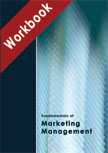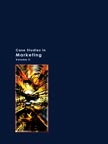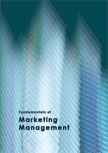Bose Corp.: Better Sound through Research or Better Sales through
Marketing?




|
|
ICMR HOME | Case Studies Collection
Case Details:
Case Code : MKTG161
Case Length : 16 Pages
Period : 1964-2006
Pub Date : 2007
Teaching Note :Not Available
Organization : Bose Corp.
Industry : Electricals and Electronics
Countries : USA
To download Bose Corp.: Better Sound through Research or Better Sales through
Marketing? case study
(Case Code: MKTG161) click on the button below, and select the case from the list of available cases:

Price:
For delivery in electronic format: Rs. 300;
For delivery through courier (within India): Rs. 300 + Rs. 25 for Shipping & Handling Charges
» Marketing Case Studies
» Marketing Management Short Case Studies
» View Detailed Pricing Info
» How To Order This Case
» Business Case Studies
» Case Studies by Area
» Case Studies by Industry
» Case Studies by Company
Please note:
This case study was compiled from published sources, and is intended to be used as a basis for class discussion. It is not intended to illustrate either effective or ineffective handling of a management situation. Nor is it a primary information source.
|
|
<< Previous
Introduction Contd...
Even as the brand grew in popularity, some market analysts continued to wonder why US consumers seemed to be so enamored by the Bose brand and why they willingly parted with their money for Bose products when they could get products with similar features and performance for half the price.
Background
|
According to company history, Dr. Bose (Refer Exhibit I for a brief write-up on
Dr. Amar Bose), a music lover, purchased a high-end stereo system in the 1950s
when he was a graduate student of electrical engineering at the Massachusetts
Institute of Technology (MIT). However, he was hugely disappointed with the
product because it was not able to recreate the feel of a live performance.
Soon, the engineer started researching why most music systems were unable to
recreate the immersive experience of a live performance.
In 1964, Dr. Bose, by then a professor of electrical engineering at MIT, founded
Bose Corp.
|
|
(See Exhibit II for the Bose wordmark and caption), with the help of his
mentor, Dr. Y. W. Lee. Dr. Bose was short of funds and had to seek
assistance from several other investors to fund his research on speaker
technology.
|
|
The speaker research project went on for several
years. At times, the company rented concert halls to test and fine tune
the speakers' reproduction capabilities.
The research team realized that, in a concert hall, most of the sound
heard by the audience did not come directly from the source, but was
reflected off the walls. This insight led to the creation of
direct/reflecting speakers which had eight drivers on the rear side of
the speaker while only one driver faced the front. This was a
revolutionary design for its time. The speaker system was named the 901
Direct/Reflecting speaker system, and was launched in 1968. |
Bose adopted a direct sales model to distribute the 901. Bose salesmen went door to door demonstrating the speaker. Customers appreciated the sound reproduction capabilities of the speaker, and the model sold well...
Excerpts >>
|
|



